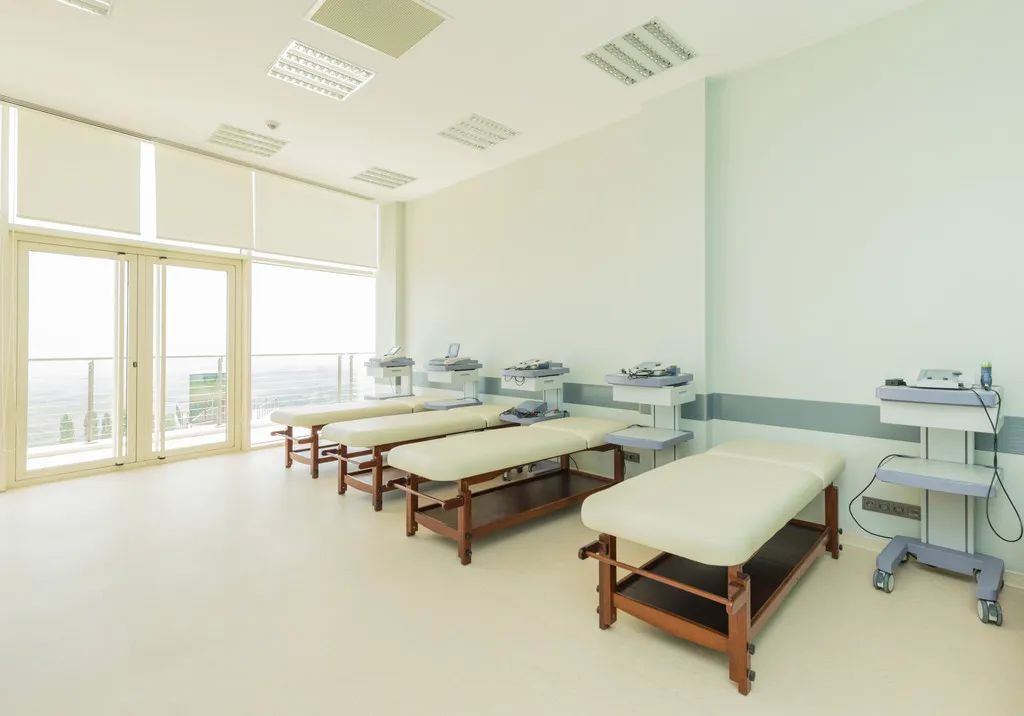Behind the expansion of public hospitals
Author:Dahe Health News Time:2022.09.25

On September 5th, Huaxi Xiamen Hospital of Sichuan University began trial operation. This is the second expansion of the "West China" branch after the opening of Huaxi Tianfu Hospital this year. The pace of expansion of Huaxi Hospital extends from Sichuan to the southeast coast. At the same time, the new branch of the Sichuan Provincial People's Hospital is also ready to go.
The layout of the branch area is a universal model for public hospitals in recent years. Not only Sichuan. Since the epidemic, there have been 20 regions including Beijing, Shanghai, Shandong, and Shaanxi. Hundreds of public hospitals have opened a wave of construction in the construction of the branch, with an investment amount of 180 billion yuan.

Figure: originated from the Internet
Shenzhen will add 20,000 new diseases in five years and 30 three hospitals; Xi'an plans to build 13 three -level hospitals this year; Wuhan will also build 11 new public hospitals (hospitals); The second phase of the first hospital was opened, with 1,800 new beds.

Public hospitals start the wave of expansion
In the past few years, the expansion of public hospital expansion has been observed under the historical context of medical reforms, and found that the vigorous new expansion in recent years has been continued in the new era of public hospitals' "bigger and stronger" development history.
Looking back at the history of public hospitals for nearly thirty years, the "Huaxi Mode" is a page that cannot be ignored. Through the establishment of competitive advantages through administrative resources, and incubation of amazing output of the top three hospitals, this model has become a model for public hospitals in various regions. , Large -scale super hospitals have emerged one by one.
Another public super hospital, the First Affiliated Hospital of Zhengzhou University, uses the medical advantage of the large population province to introduce experts to retain local patients and attract patients from other places. Known as "the world's largest hospital".
In addition to the "West China Department", the more mature "Zhongshan Department" and "Peking University" models have also been rolled out of second- and third -tier cities and counties across the country.
The number of mature doctors in a area has always been relatively stable. The expansion and development of the "Big Three" will inevitably compete with local grassroots medical institutions or underdeveloped areas. Therefore, the state's shares of public expansion waves to curb, and the Health Commission has issued the "Urgent Notice on Controlling the Excessive Expansion of Public Hospitals". Strict restrictions. In the context of controlling the size of a single hospital, the construction of the new hospital district is a "wipe -edge" style. This wave seems to be unstoppable, and it has been singing all the way.
Zhu Hengpeng, the Public Policy Center of the Chinese Academy of Social Sciences, previously wrote an article that the extension of public hospitals was incorrectly issued by administrative means.
First of all, tertiary hospitals generally do not need fiscal investment and expand themselves.
Secondly, the health administrative department and the third -level hospital management office does not distinguish. This is a family. The scale expansion of the third -level hospital is a good thing instead of the health administrative department, especially the supervisor leaders. It is said that as long as you do not need to invest more, the expansion of the scale of public hospitals is the political achievement of the local government, and naturally there is no enthusiasm for strict control.
The sudden epidemic has accelerated the pace of expansion of public hospitals, but it will also show more risks and problems, and a significant loss is one of them.


40 % of public hospitals cannot afford wages at losses
On July 6 this year, the National Health and Health Commission issued the "Notice on the National Monitoring and Analysis of the National Monitoring and Analysis of the National Third -level Public Hospitals in 2020", which reported that about 40 % of the hospitals suffered losses. Falling into losses, the scale of losses exceeded 60 billion yuan.
Liabilities and arrears of wages have become the norm, and some public hospitals are facing closure. On August 15th, a media reported that the Fourth People's Hospital of Leshan City, Sichuan has been closed since July last year. The situation of social security has not had exact information about the diversion of hospital staff in the past year.
According to the surging news video, some employees of the Zhen'an District Hospital of Dandong, Liaoning have reported that they have not paid for five consecutive months. There are also doctors from the Public Trinity Hospital who speak up online, saying that the medical income has decreased since the epidemic, and the performance bonus of the department has fallen sharply. However, due to epidemic prevention, the workload has skyrocketed, and it does not rest for a month. It is 1.5W, now it becomes 3K, and the subsidy is slow.
The general decrease in medical surplus is related to the simultaneous development of hospitals to ensure the prevention and control of the epidemic and daily diagnosis and treatment, and the increase in prevention and control investment and increased operating costs. At the same time, there are zero bonuses for drug consumables, inspection and testing price reduction, medical insurance payment method reform and performance assessment evaluation, and hospital liability expansion;
The revenue of public hospitals mainly comes from hospital revenue and fiscal appropriations. Both of them have been greatly impacted after the epidemic.
According to the survey data of the National Bureau of Statistics, the business volume and revenue of domestic hospitals in May this year generally declined, of which nearly 80%of the hospital's outpatient clinics fell by more than 40%year -on -year, and the hospitalization volume of over half of the hospitals fell by more than 50%year -on -year. More than 60%of hospitals account for more than half.
In revenue, fiscal appropriations have decreased sharply. Public hospital's medical equipment configuration budget was cut after the epidemic. According to data from the State Medical Insurance Bureau, the appropriation of comprehensive public hospitals in 2020 fell 41.8%, which made the hospital that was impacted by the epidemic.
Director of a third -level hospital in Liaoning said that the epidemic impacted their hospital from January to June this year, a total of 9.6 million yuan. However, some industry experts believe that the reason why public hospitals have more importantly, not only because of the epidemic. Liu Hongwei, the chief accountant of the People's Hospital of Inner Mongolia Autonomous Region, wrote that the problem of losses of public hospitals was not only caused by the epidemic, but also not only caused by the government's appropriations. The hospital's own cost control is not enough. , And less business levels and at the source, cost management.
The director of a second -level hospital in Guangxi also said that the epidemic factors accounted for up to 50%, and a large part of it was because of blind expansion and buying equipment. According to the case he learned, a set of laparoscopy with the same brand and the same model of the same brand, the price of 180,000 in a hospital in Guangxi, and the bid price in a hospital in Henan was as high as 13 million.
In addition to losses, more public hospitals have embarked on the road of debt. The "National Examination Notification" shows that in the loss hospital, 7.51%of the second -level public hospital's asset -liability ratio exceeds 100%, 49.53%of the second -level public hospital assets The debt ratio exceeds 50%.
From the perspective of the debt of public hospitals, it is divided into two types: operation and infrastructure. On the one hand, 40 % of the public hospitals are in a loss of money and cannot be eaten up; on the other hand, hundreds of public hospitals continue to expand newly -built new branch areas, and the number of public hospitals with 800 beds has doubled in ten years. From 2010 The year 707 increased to 1932 in 2020.
In this regard, Xu Yucai, the former deputy director of the Health and Health Bureau of Shaanxi Shanyang County, told the clinic industry that people who decided to expand the hospital are often not the same person as operating hospitals; secondly, the loss of the hospital's losses does not affect the political achievements and interests of the hospitals. It mainly affects the performance of employees, which has nothing to do with them.
Large -scale expansion of beds and hospitals in the hospital are often relatively serious, and then increase operating costs, which may bring more operating debt. Both revenue and fiscal allocation are decreasing, but the construction of new construction has led to rising expenditures. Hospitals at all levels can only be "too tight" in accordance with the requirements of the State Health and Health Commission.
Private medical care under the tide of public expansion


Developed specialty supplement as a trend
Since the epidemic, the public hospital branch area has expanded, and most of the layout is in new districts of various cities. This was previously a gathering place for the development of private hospitals. There are no supporting public hospitals in some economic development zones and new districts. There is enough living space for medical care.
The arrival of a group of public hospitals in public hospitals will undoubtedly have an impact and impact on private hospitals.
However, some people in the industry believe that only public medical institutions cannot support 1.4 billion people with a huge and multi -level medical needs. The non -basic medical service areas that public hospitals cannot take into account can achieve the present and future of social medical treatment.
As a result, focusing on specialists has become the choice of many private medical institutions. Compared with comprehensive hospitals, specialized hospitals mainly provide professional and special medical services for related fields, which can complement the public.
At the same time, focusing on the development of specialties has also been clearly supported by policies. The General Office of the State Council issued the "Opinions on Supporting Social Forces to provide multi -level diverse and diverse medical services". The opinions clearly stated that "actively support social forces to penetrate into the segmentation service field of specialized medical treatment, expand the effective supply of services, and cultivate professional advantages. In the fields of ophthalmology, orthopedics, oral, obstetrics, pediatrics, tumors, spirit, medical cosmetology and other specialties, as well as rehabilitation, care, and physical examinations, to accelerate the creation of a group of competitive brand service agencies. "
The senior investor of the medical circle, Lin Treasurer, wrote an article to analyze the future prospects of private medical care under the tide of public expansion. He said: In 2003, after the "SARS" epidemic, public hospitals accelerated the pace of expansion. But the expansion is very disorderly.
After the "new crown" epidemic, in addition to the continued expansion of public hospitals, private medical care will continue to develop, but this time it will be much more orderly than the past two years. Social medical regular army has gradually entered the venue in batches.
references:
[1] "Endless Smoke: Fifteen Years of Medical Reform" Chen Xiaorong, Boss Dai, Boss Dai Boss
[2] "General Accountants Talking about Public Hospital Losses: Not only Epidemium Impact" Liu Hongwei
[3] Zhu Hengpeng, "Research on Medical Reform Issues under the Perspective of Finance", China Social Science Press
[4] Caixin Weekly of "grass -roots medical treatment"
[5] "When we hotly discuss the expansion of public hospitals, what are you talking about? "
- END -
Star | One "Lost" journey

I often take children out of the summer vacation to increase their knowledge and o...
Recommended reading | More than 7,000 positions in 200 state -owned enterprises are waiting for you
A few days ago, the deep night reporter learned from Shenzhen Talent Group that the Elite Jugue City Shenzhen -owned enterprise 2023 campus recruitment hosted by Shenzhen State -owned Assets Supervi